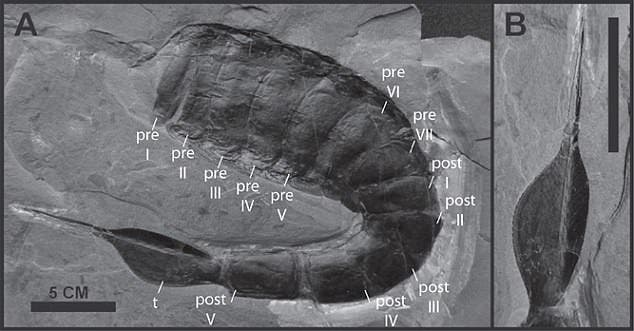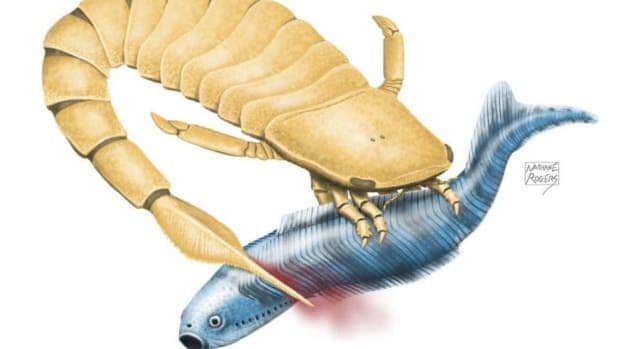Finding fossils gives us a peek into a time long gone, and to creatures long extinct. Many of them seem very weird-looking to us, compared to current animals. Here’s another to top the lists, an ancient sea scorpion had a tail with sharp edges that It likely used to chop up its prey. Researchers from the University of Alberta studied a fossil of the sea scorpion that is unusual in that its tail was preserved curved to one side. This posture showed the researchers that its tail was flexible in an unexpected way, supporting their hypothesis.
Sea scorpions
Sea scorpions, officially called euryterids, are the largest arthropods that ever lived. Some could grow up to 3 meters (that’s the same length as a great white shark). They were also very common aquatic predators. Eurypterids were named sea scorpions due to their claws and spine-tipped tails. They lived in the warm shallow water 430 million years ago, before even sharks, one of the oldest living sea creatures. Sea scorpions are related to modern scorpions and horseshoe crabs. They had long, thin segmented bodies and serrated tails.

The fossil and a close-up of the deadly tail. Image credits: W. Scott Persons IV & John Acorn, 2017.
“If you saw one, it would be a little bit like a cross between a lobster and a dragonfly,” Scott Persons, palaeontologist and lead author on the study, said during an interview with CBC Radio’s Edmonton AM. “It has a long segmented body — some of them do have long pinching claws — and then it has got this head, which if it weren’t for all the features would actually be pretty cute because it’s got these large eyes, probably important for detecting and zeroing in on its prey.”
Deadly weapon
The newest fossil was discovered in Scotland, near Lesmahagow. This particular sea scorpion is called Slimonia acuminate and was about the size of a lobster. The special thing about this fossil was that the eurypterid was preserved curving its tail. Before, it was thought that the sea scorpion used its tail to propel itself like shrimp do but moving its tail side to side would cause little water resistance, meaning that the tail was used for another purpose. This lateral movement is very uncommon among elongate, multisegmented aquatic arthropods.

An artist’s representation of how the sea scorpion could have attacked. Image credits: Nathan Rogers.
The researchers knew that these eurypterids had sharp tail spines before but that had no idea about how they could move their tails. Now that they know that they could curve it and how flexible the exoskeleton was, they have the hypothesis that the sea scorpion used its tail as a weapon. The sea scorpion likely held on prey with its legs and mouth and could slice it to kill it and to chop it up into pieces that are small enough to eat. They could use the tip of their tail to pierce and the serrated edges like a knife. Another implication of this discovery is that these eurypterids could probably eat prey bigger than expected.
Journal reference: Persons, S.W. IV and Acorn, J. A Sea Scorpion’s Strike: New Evidence of Extreme Lateral Flexibility in the Opisthosoma of Eurypterids. The American Naturalist.









